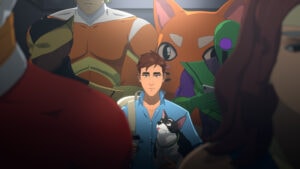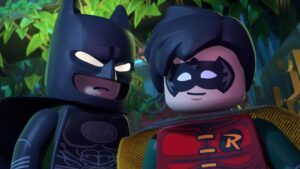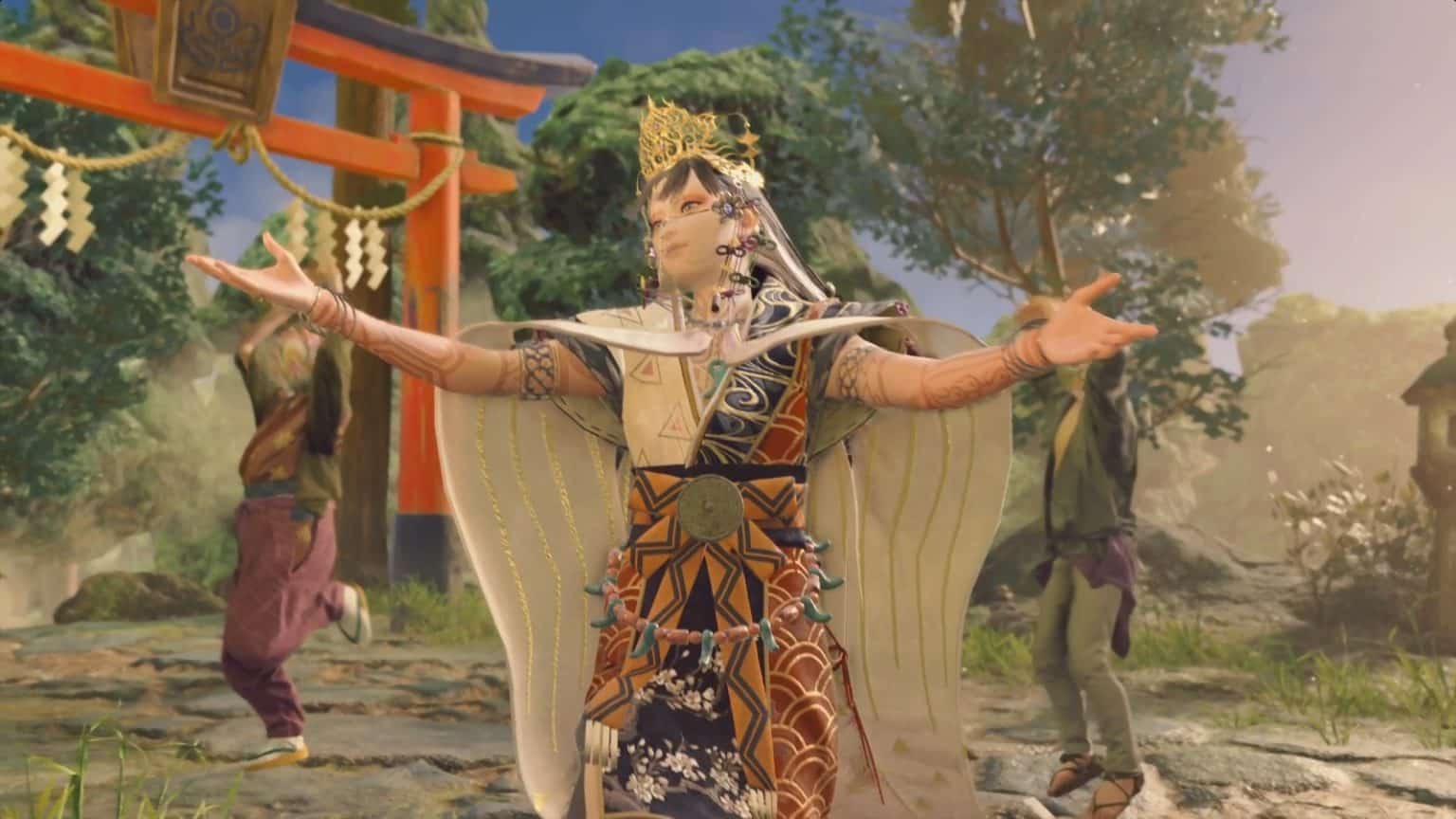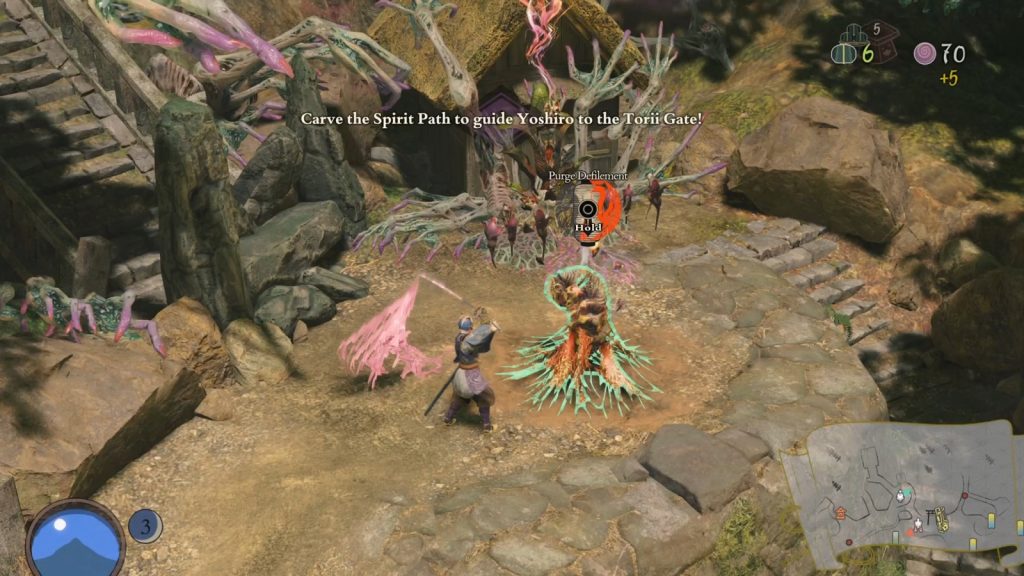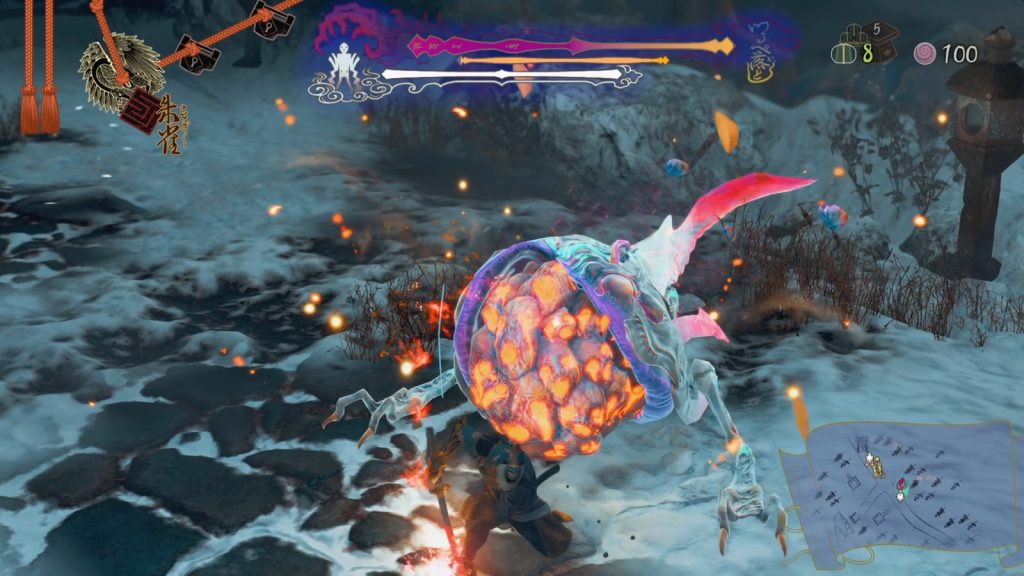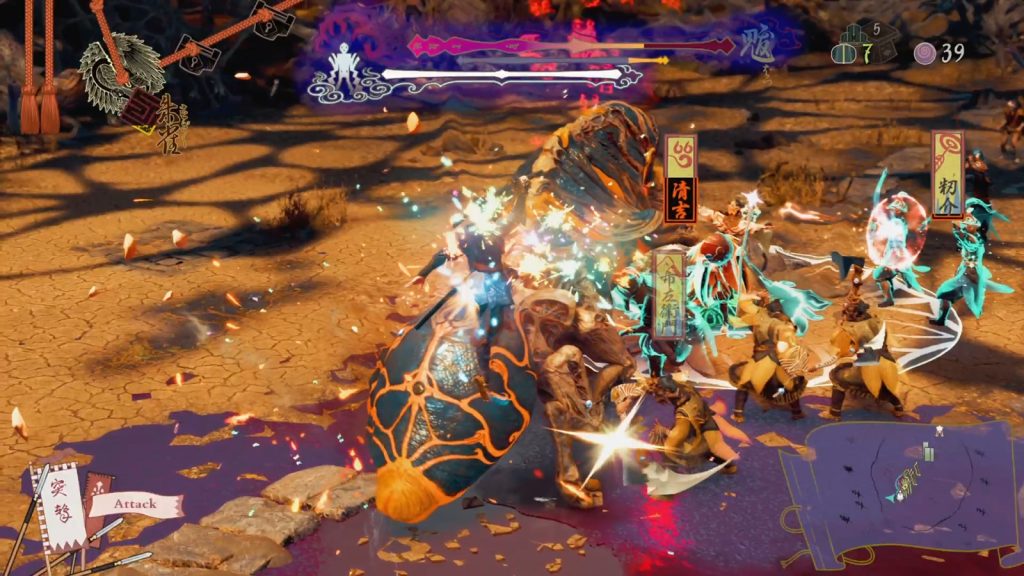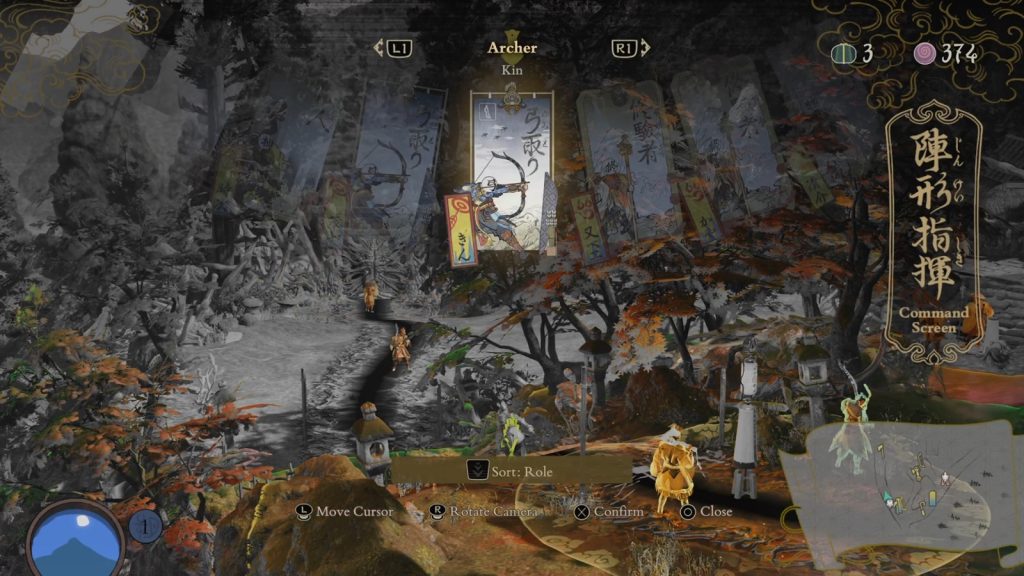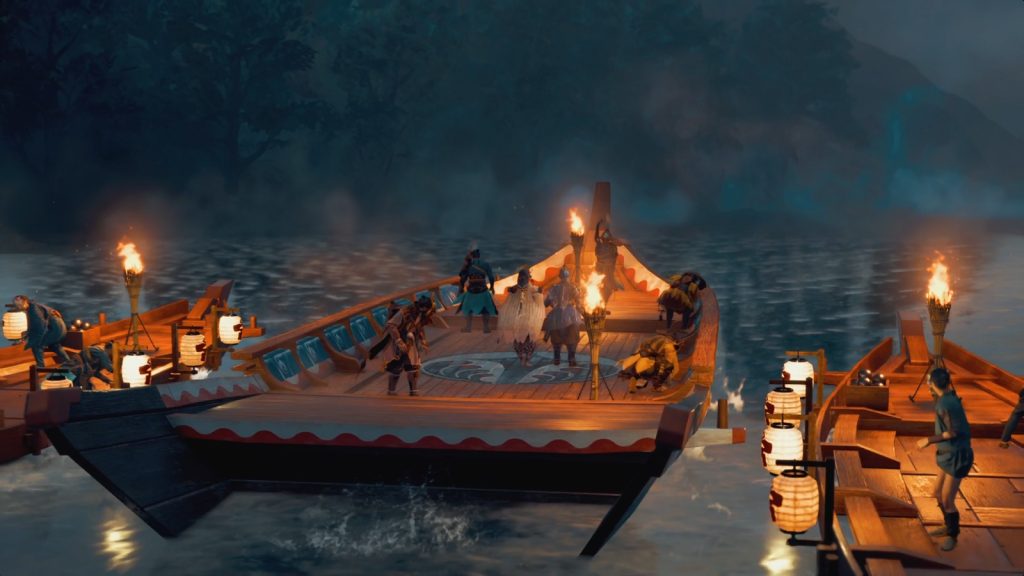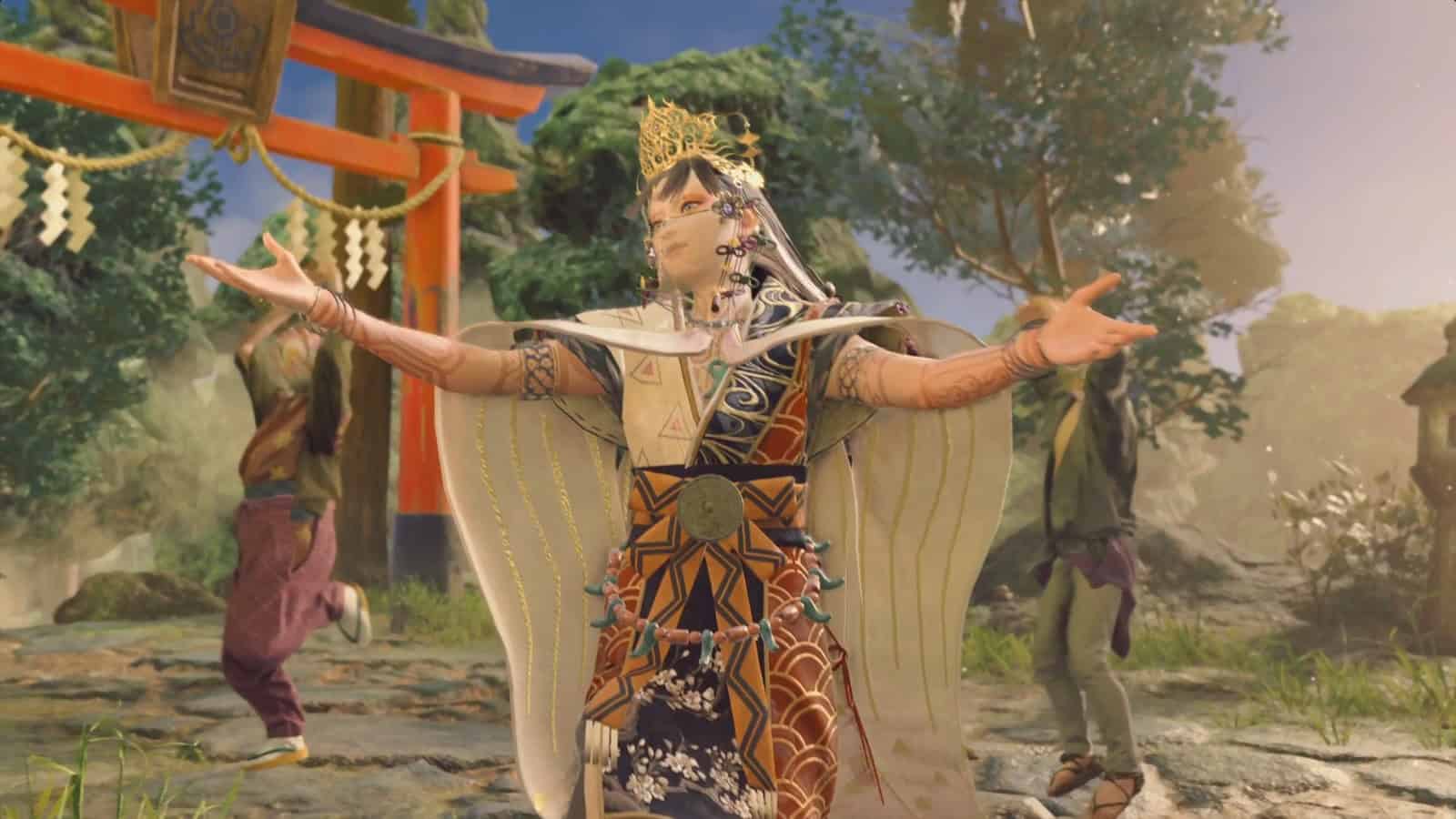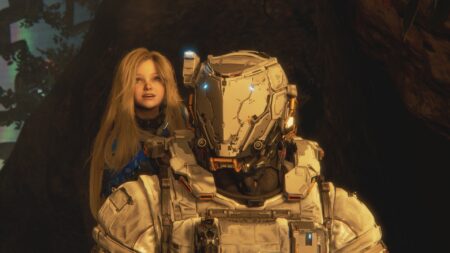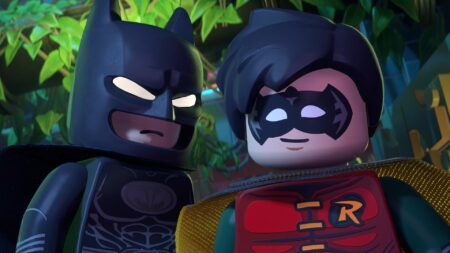For a long time, Capcom enjoyed a level of success uncommon among AAA game publishers. Many of their franchise main stays from Resident Evil, Street Fighter, and Monster Hunter are highly praised by both critics and gamers alike. Even Dragon’s Dogma – a series that has been dormant for many years, achieved great success with Dragon’s Dogma 2.
However, this success level has not yet been shared with their newer IP. Exoprimal failed to reach the numbers needed to sustain a live service. So, How will Capcom’s latest IP, Kunitsu-Gami Path of the Goddess, stack against Capcom’s best works? Will it be a surprise hit? Or is it fated to become a cult classic like Okami? Let’s find out.
Kunitsu-Gami: Path of the Goddess is an action-strategy game set in Mt. Kafuku – a sacred mountain covered in defilement. Players take control of Soh, a swordsman whose sole task is to protect the maiden Yoshiro. Their objective is to cleanse Mt. Kafuku of the evil that infests it. To do this, they must reclaim masks stolen by the enemy, free cocooned villagers, and set up the cleansing ceremony by clearing a pathway from the top of the mountain to the bottom.
The game has two main phases for each level: a daytime phase and a nighttime one. During the day, players explore the map, free villagers, and loot anything not nailed to the ground. The player’s objective is to build a fighting force capable of fending off the Seethe and clear a path for Yoshiro to the corrupted Torii gate at the other end of the map. All these actions require crystals, making it a constant frantic race against time to gather everything you need to last the night.
When night falls, the Seethe attack relentlessly in waves. This is where the RTS part of the game comes into play. As commander, the player will utilize the Kagura Action Strategy system to place units in the right places, be it melee units in the front lines or archers in the high ground. But it isn’t as simple as positioning units and letting them do all the work, more often than not, a certain powerful enemy will force you to change your formations or unit types in the heat of battle. This kind of active gameplay is a welcome change for anyone who’s used to watching lines of soldiers beat each other to death.
Battles end at sunrise as the enemy is temporarily forced back into the shadows. Yoshiro will then continue to dance her way to the end of the level while the player makes new preparations for the next round of assaults. The level ends when Yoshiro reaches the end of the level and cleanses the map of all corruption.
When you aren’t telling where defenders have to go, you will be busy hacking and slashing through hordes of enemies. Thankfully, Soh’s strikes and movements are highly responsive to player input. It’s a joy running around the battlefield like a Demon Slayer Hashira. A slight disappointment is that we don’t get the flashy effects the forms produce after every move. But then again, I too would get tired of seeing sword forms slicing wildly at nothing.
After cleansing an area and defeating the boss of that area, the player will be rewarded with a new unit to purchase and subsequently upgrade. Most rewards in the game come in the form of clearing challenges and repairing structures in reclaimed areas. These upgrade points can be used to upgrade units and eventually upgrade Soh’s abilities. This gives us players a reason to revisit stages to see if we can clear challenges for more upgrade points. Add in the fact that New Game+ adds something more to the game and you are looking at dozens of hours of gameplay from start to finish.
The game goes for the ‘show, not tell’ approach to storytelling. In fact, it lays everything out neatly within the first minute of the game. And then everything after that point is a series of non-verbal, yet highly expressive cutscenes. The ritualist dancing alone is highly enjoyable to watch. The same goes for Soh’s graceful sword dancing.
What this game lacks in narration, it makes up for in gameplay. There are 11 classes to unlock, each having a distinct job on the battlefield. The Woodcutter class, for example, is good at clearing smaller enemies but they are ineffective against larger ones. This is why the Spearman is better at handling large enemies despite them struggling at crowd control. And there are lots of enemies types to watch out for. It’s almost like new enemies get introduced every level and some bosses will return as wave bosses. You will be kept on your toes throughout your adventure.
Another thing I should mention is that the game locks in certain villagers to specific roles. This adds another layer of tactics as it limits the number of higher-tier classes on any given mission and possible formations you can do. If the right villagers even appear in the mission, to begin with. This is mostly for the Sumo and Shaman classes only.
I’ve given a lot of praise when it comes to the game’s visuals. This feeling of awe occurs after watching Yoshiro do her Kagura dance when she cleanses a Torii Gate. I don’t always get to watch these kinds of dances in video games, the first one that comes to mind is Yuna’s dances in Final Fantasy X, but when I do, it’s always lively and memorizing. The game’s equally lively soundtrack does its job of getting us ready to go to the level.
If there’s any complaint to have in this game is that the Thief class is not explained very clearly. I had this idea of letting the thief go around the map, looking for stuff to dig up. Little did I know I was supposed to look for treasure chests and guide them to the chest. It’s a utility class at most. The thief is mostly useless during the nighttime. At best, they will run around gathering crystal for you but that’s after unlocking its last upgrade. Also, the thief can into some bad spots thanks to its pathfinding. It might be better to change them into Woodcutters if you can afford it.
Kunitsu-Gami Path of the Goddess is an amazing game deserving of a spot in Capcom’s roster of games. I don’t see it as something that’ll get the Resident Evil treatment of world-building, but it is nonetheless another hit from Capcom. Hopefully, we may see another collaboration with Okami if the stars align. I highly recommend this game for players who enjoy a lot of hack-and-slash action in their games and wouldn’t mind a small dose of RTS to round out the experience.

